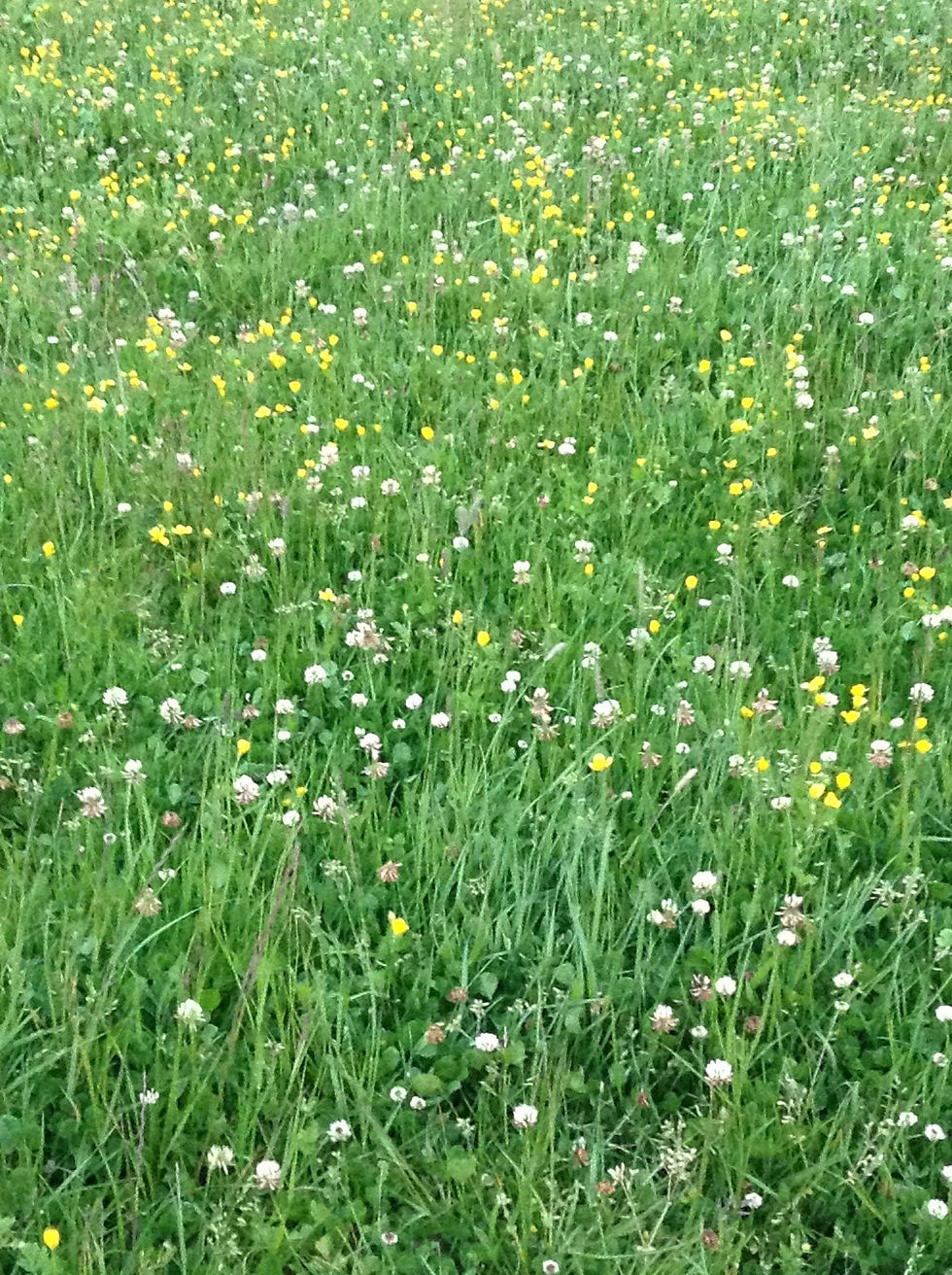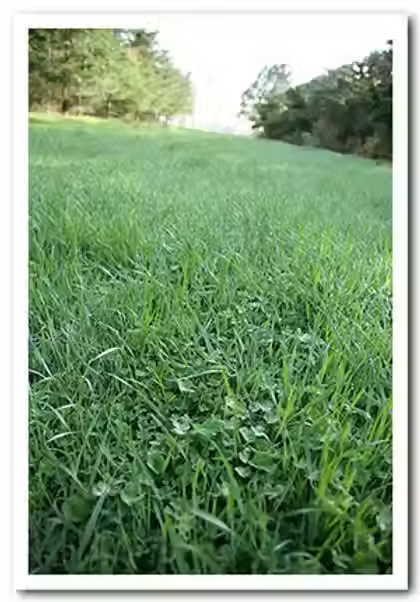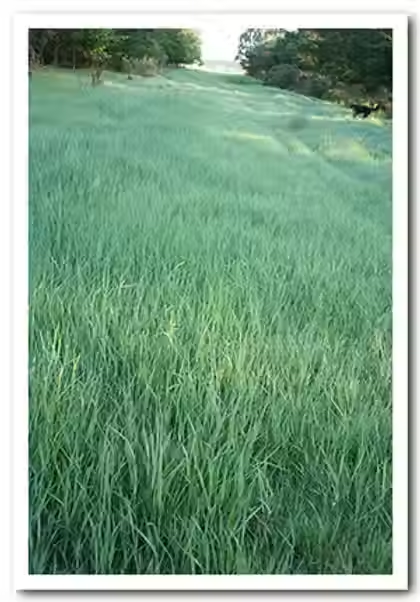Is Clover Good for Horses?
- Jenny Paterson

- Aug 12
- 4 min read
Updated: Aug 26

The answer is an emphatic NO.
This is because the equine digestive system is not adapted to consuming clovers as ruminants are.
Clover was not a plant horses would encounter in the dry semi-arid environments where they evolved.
Clovers thrive in more temperate regions of the world, like NZ, UK & the lower half of Australia where there are moist, organic soils with moderate to high rainfall – all regions we humans have translocated horses to.
Consuming a small amount here and there won’t hurt most horses, but if you don’t keep on top of it, it can take over and become highly problematic.
In our experience at the coal-face of issues plaguing modern day domestic horses, owners very much under-estimate the trouble that comes with CLOVER!

Clover contains multiple anti-nutritional traits for the horses grazing it:
1. Clover is LOW in fibre (15-16%) Fresh, growing clover (eg after a drought-breaking rain) can cause rapid fermentation, loud gut noises and digestive upsets. It causes bloat in ruminants.
2. High Potassium and CP/NPN/Nitrate levels are associated with respiratory issues eg wheezing, coughing, Head-Shaking, PSSM symptoms, tight muscles, SIJ issues, allergies, hives, uncharacteristic behaviour.
3. Photodynamic pigments in the leaves cause ‘mud-fever’ and ‘sun-burn’ (Photosensitisation).
4. ‘Hormonally active compounds’ disrupt normal cycling of mares and cause changes in the ‘behaviour’ of geldings (they are thought to be ‘rigs’)
5. High levels of sugars and starch contribute to obesity, EMS & laminitis in horses and ponies Clovers are used to fatten lambs and other livestock.
6. ‘Cyanogenic glycosides’ - these are goitrogenic compounds which affect the uptake of iodine by the thyroid when clover plants are damaged by frost, trampling and chewing.
For all these reasons clovers get in the way of you having a consistently calm, healthy horse.
If you run a breeding operation they interfere with many aspects of reproduction at significant economic cost.
When you weigh it up - for the sake of the health and well-being of your horses, and to avoid unnecessary costs in dealing with the consequences, not to mention your safety and enjoyment, clover is best eliminated from pastures ear-marked for grazing by horses or growing hay for them.

How to discourage clover from proliferating in your horse paddocks.
It is very easy to inadvertently encourage it.
You will need the services of your local agricultural contractor who needs to understand the equine perspective. This is because they will have a default goal of ‘maximising yield’ which is not the primary concern when creating safe pasture for horses.
Clover proliferates in wetter conditions when the soil lacks sufficient nitrogen for GRASS to grow.
It dies off over dry spells and comes back with a vengeance as soon as it rains.
Clover is encouraged by over-grazing the land. There will be millions of clover seeds in the ground and the act of harrowing the paddocks/fields when it is very short and there are bare patches, will encourage clover germination. Cover up bare patches with mulch and old hay.
If you only have 'patches' of clover you can cover them with old carpet or black polythene for several weeks.
If it has taken over and out-competed the grass as in the photos then you need a longer term strategy...
Shading out
Grass needs to get to 2-3 feet tall before it will effectively shade out clover. If there is more clover than grass to start with, this is not likely to happen.
Soils
Did you know that GRASSES grow well in slightly acidic soils (pH 6 or under) whereas clover prefers more alkaline soils (pH >6)
This explains why liming paddocks which increases soil pH, often has the unintended consequence of an explosion of clover growth.
It is always better to do a soil test to establish pH and mineral status of your soils BEFORE applying anything!
Keeping soils at a pH of 5.8-6 is good for GRASSES and for discouraging clover growth.
Applying nitrogen to the land in the form of ‘sulphate of ammonia’ will both add nitrogen to the soil and keep the soils slightly acidic. This will encourage GRASSES to grow rather than clover. Then you will have clover-free hay.
Be cautious not to overdo nitrogen as too much will cause health issues as per the previous post
What about when clover has completely taken over?
Find somewhere else to keep your horse safe while you get it sorted.
If it is your own property make a Dry Lot or a Track around the edge.
It would be tempting to borrow the neighbours cattle but even grazing with cattle is risky as they are more prone to bloat than sheep, and sheep are susceptible to ‘Red Gut’ on fresh clover.
It is hard to get rid of solid clover without the use of a broadleaf spray**.
Applying nitrogen to existing clover will help reduce it in the long run but not enough and in the meantime doing so will make that clover too high in nitrogen/CP for horses.
Apart from spraying there isn't a quick fix. To restore suitable horse pasture you will likely need to spray it off ONCE, apply enough nitrogen for GRASS growth and resow with grasses like cocksfoot and browntop. Spraying with a broadleaf spray will have to be done on a yearly basis in order to knock the clover that keeps coming through - and it does. **If you have concerns about spraying with a broad leaf spray, please read the following link... https://www.calmhealthyhorses.com/nitrogen-clover






Comments